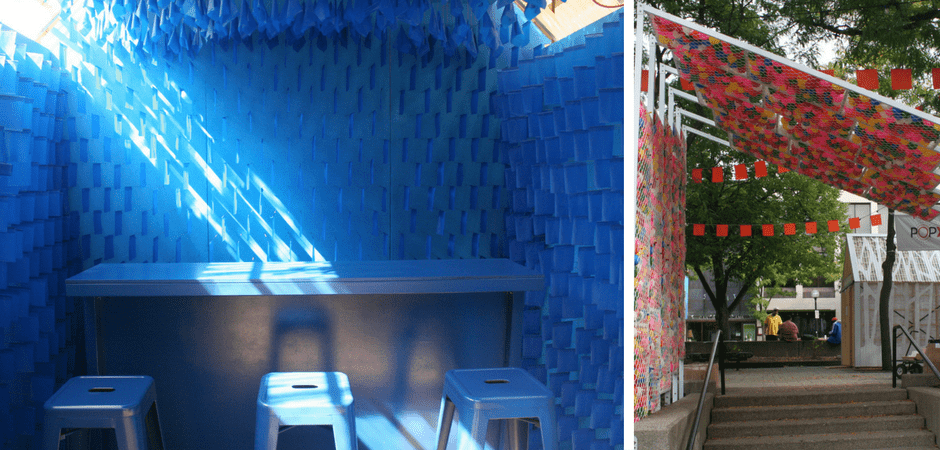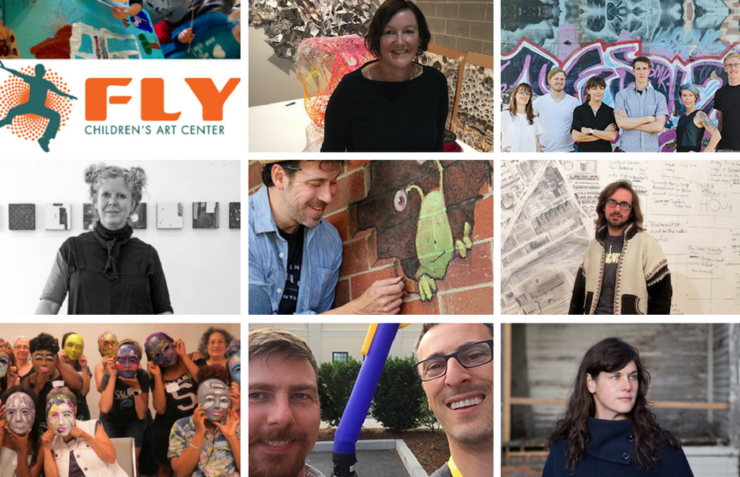An immersive arts initiative put forth by The Ann Arbor Art Center to involve the community-at-large in collaborating with a diverse panoply of local and national artists situated within each of the exhibition pavilions in Liberty Plaza, POP-X 2016 strives to facilitate public engagement through art as a tangible, creative and performative force.
With that in mind, our juried group of artists and their respective pavilions this year truly encapsulate and reflect a very specific form of commitment to the notion of ‘immersiveness’ through artistic and local community engagement in the Ann Arbor area and beyond.
AAWA:
The Ann Arbor Women Artists’ and their pavilion reflect discovered commonalities in people who may seem to be antithetical on the surface. In pairing their artist with someone outside the collective of AAWA and crafting pairs of masks that are representative of the overlap between identities as well as their inimitable distinctiveness, AAWA’s pavilion is ultimately one of mutual storytelling through direct community involvement.
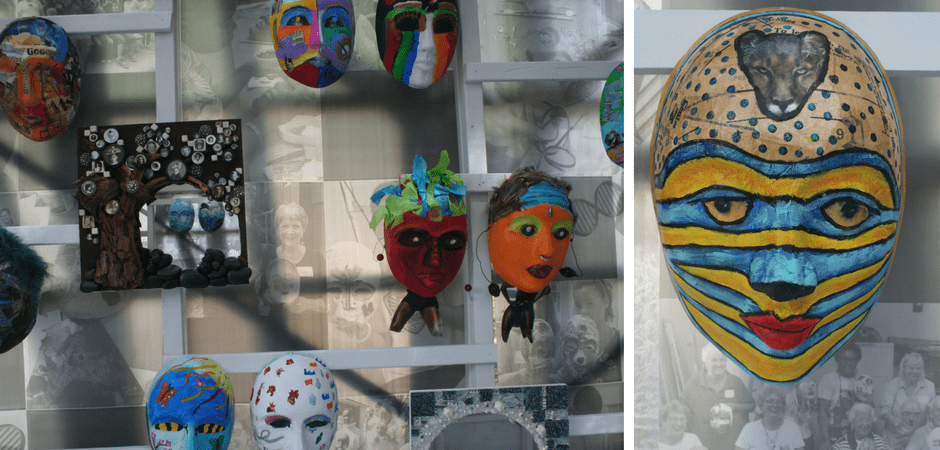
Jodi Stuart:
Jodi Stuart spins the inorganic web of her pavilion into literal existence during the duration of POP-X in itself, utilizing a 3-D pen and a tactile, synthetic plastic filament through an utterly painstaking hands-on process that is as performative as it is breathtakingly immersive.
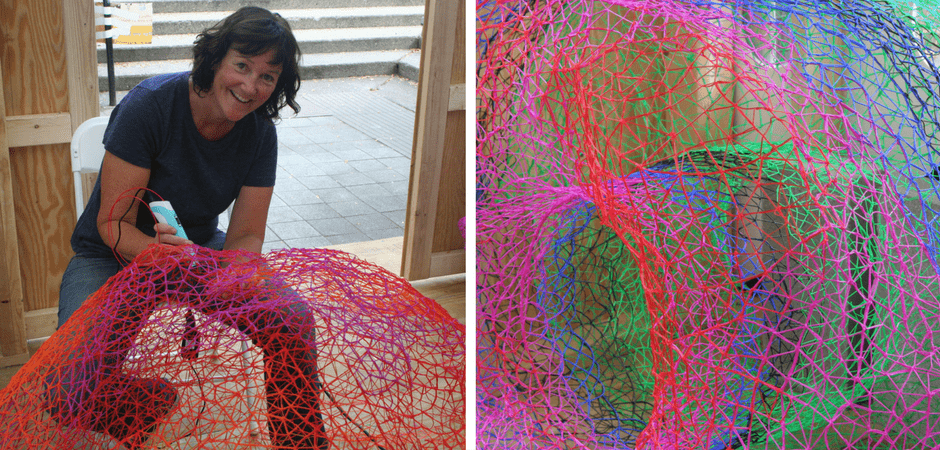
Lisa Waud:
Lisa Waud of Pot & Box fame brings a micro version of her renowned Flower House installation to POP-X, by converting her exhibition pavilion into a space filled with ephemeral blooms that encourages dynamic movement and interaction in different ways that are indicative of our uneasy grappling with our urban and environmental landscapes.
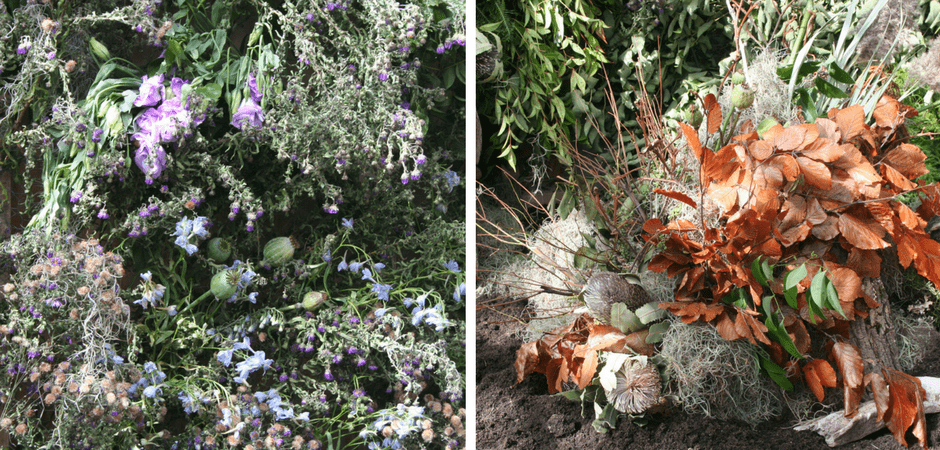
Andrew Thompson:
Andrew Thompson’s pavilion can only be classified as a sculptural social commentary—a greater dialogue on manufacturing, labor, and the fraught history of Detroit by connecting the employees of Shinola to two specific examples of Detroit’s past that coincide with the founding of the company. Through this collaboration, his pavilion will be covered in collaged text written in a variety of personal scripts which will eventually be scaled up and transferred to the exterior of his pavilion by Thompson’s own hand, weaving together a sense of place and community to the here and now through a second skin of ink and vellum.
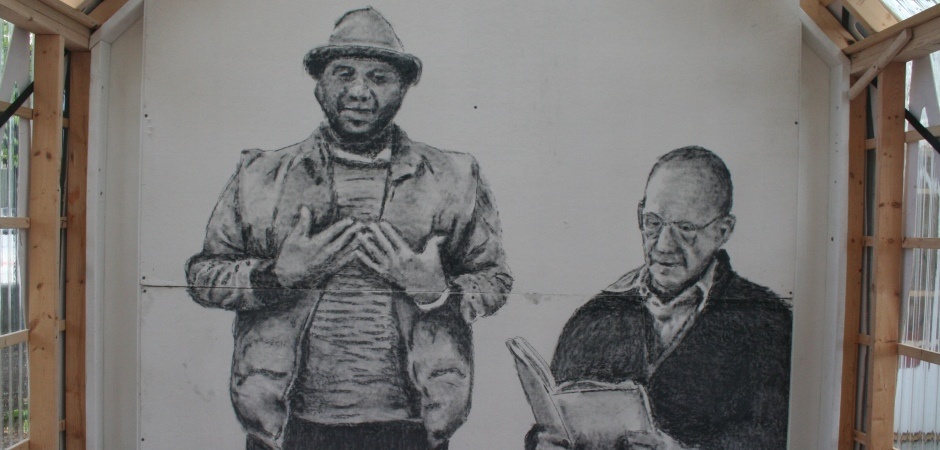
Donald Harrison and Martin Thoburn:
A four-channel video installation testing the bounds of space and time underscored by the geographical constraints of Ann Arbor, Donald Harrison and Martin Thoburn’s pavilion seeks to collaboratively explore spatial limitations along with POP-X attendees as they travel through the arbitrary margins and interstices that make up a city’s border through technology, dynamic movement and modes of transportation.
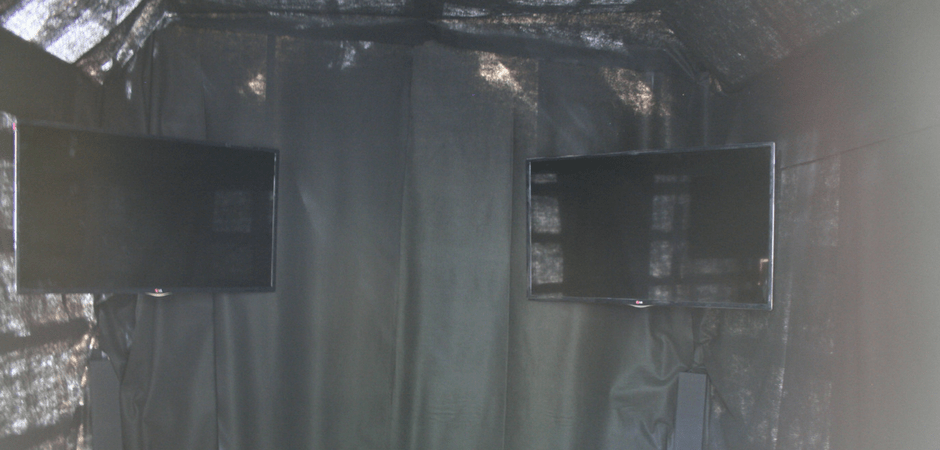
David Zinn:
Catch local chalk-artist extraordinaire David Zinn’s pavilion as it spills out over its confines into the streets beyond, through the transformative power of co-creation with the public at large. Zinn enfolds members of the greater community into his creative process, inviting them to freely draw, sketch and fashion art as they see fit in his pavilion by utilizing chalk as a medium. In this way, Zinn employs art as a tool to truly facilitate a conversation with the public and transforms the process of creating art into a transcendent experience.
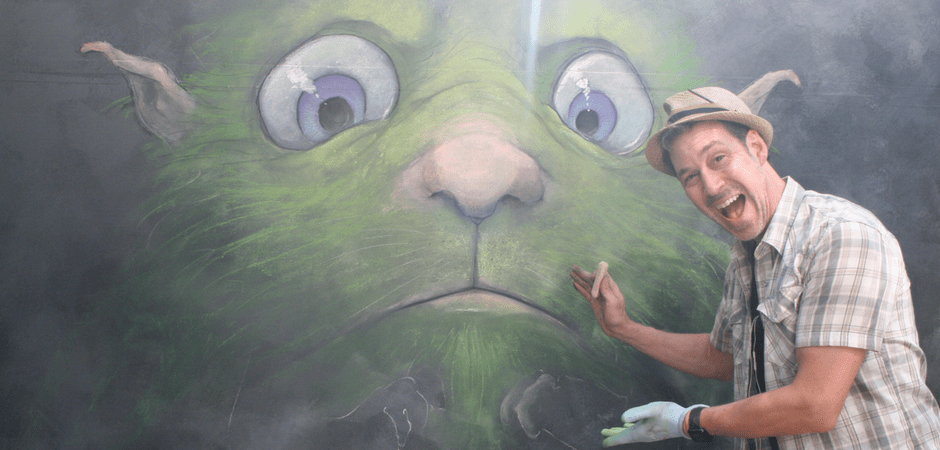
Beth Billups:
Beth Billups’ pavilion entitled “What’s your Story Ann Arbor?” reflects narrative happenstance and storytelling by involving a staggering number of miniature wooden blocks (six hundred total) with words on five hundred of them and images on the remaining hundred; through a large-scale installation evocative of fridge-magnet poetry. As people float in and out of her pavilion, they will have the opportunity to forge their own manifold stories through literal building blocks—piecing together a palpable whole through disparate wooden fragments of words and images.
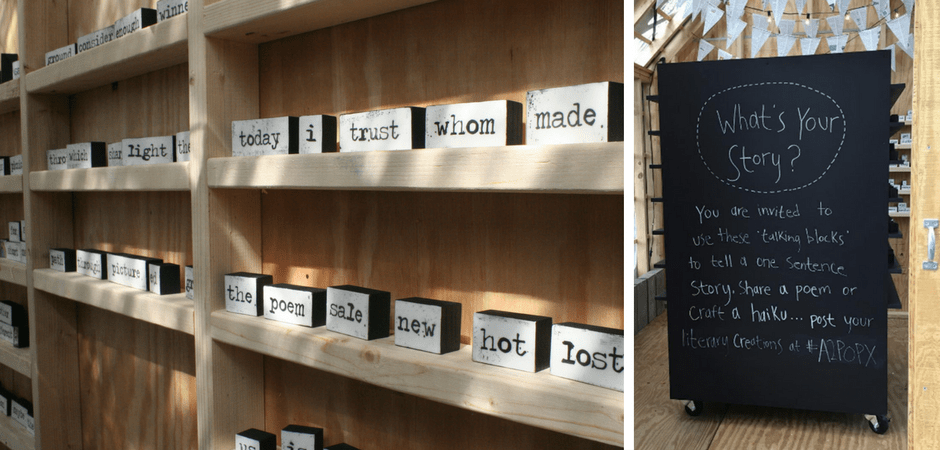
Fly Children’s Art Center:
Marie Tharp (1920 – 2006)—a superlative oceanographer, geologist and oceanic cartographer—was derided and undermined by her male peers in the 1950’s for her work on account of her gender. Despite the relentless pushback, she went on to discover the Mid Atlantic-Ridge that led to a dramatic shift in the understanding of plate tectonics. The Fly Children’s Art Center will seek to uplift and inspire the community through Tharp’s achievements by centering their pavilion around her story and her contributions to the fields’ of oceanography and geology, by conducting ongoing summer workshops with the public in co-creating artwork for the pavilion. As POP-X attendees saunter in, they will get the sense of edging along the ocean floor as an exploratory boat looms over the roof of the exhibition pavilion.
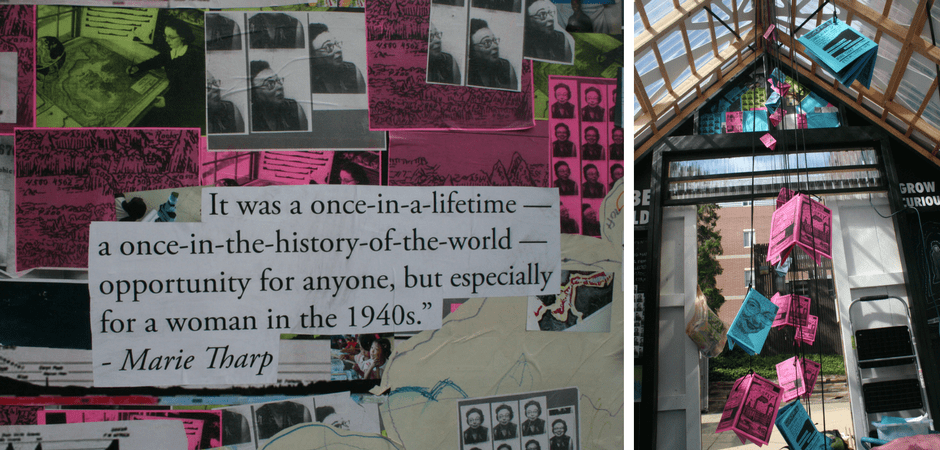
Synecdoche:
Apropos of the water crisis in Flint and the urgent conversations it spurred on in the socio-political, racial and economic fissures of the state of Michigan (and the country as a whole), Synecdoche’s pavilion engages with the inherent dualities in our relationship with water by having one wall display the light-hearted and carefree spectacle of economic stability through summertime fun, while the other reflects the very real, very tangible distresses of emergency water rations. By juxtaposing our disparate relationships to water within a single, cocooned space, Synecdoche hopes to spur on moments of deep contemplation and lively discussions amongst guests and POP-X attendees.
